Stockholm, especially in the middle of their dark winters, is genuinely one of the most hauntingly beautiful places to explore. The lamplit alleys cast an ominous golden glow down on the cobblestone below. The echos of your footsteps causing you for a moment to suspect you might be followed. But when you turn around, there is nothing but darkness behind you. This kind of atmosphere is ideal for ghost hunting and exploring the darker side of Stockholm’s history.
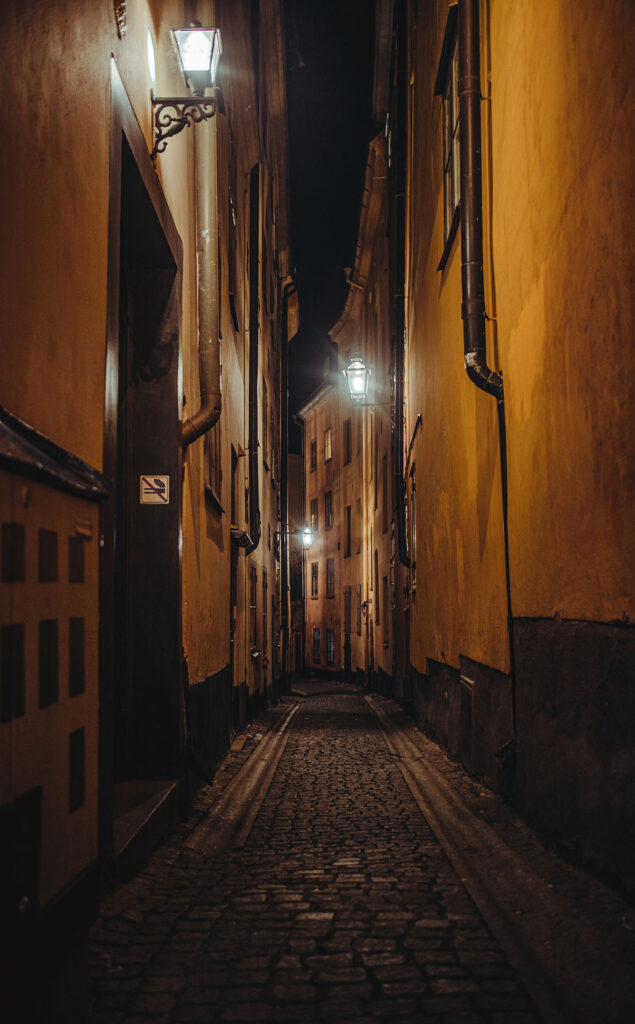
- Mårten Trotzigs Gränd
- Black Friar Tombstone
- #23 Baggensgatan
- #14 Kindstugatan
- Stockholm Bloodbath
- #20 Stortorget
- Tjuvakällaren
- Siskeburen
- #24 Västerlånggatan
- Stockholm Royal Palace
- Storkyrkobrinken
- Bonde Palace
- Riddarholmen
- Stockholm Cityterminalen
- Nya smedjegården
- Rosenkammaren
- Stora Barnhuset
- Schefflerska Palace
- The Käpplinge Murders
- Brunkebergstorg
- van der Nootska Palace
- Stockholm's Bysättningshäkte
- Kolerakyrkogården
- Galgbacken
- Skogskyrkogården
- Happy Travels Adventures!
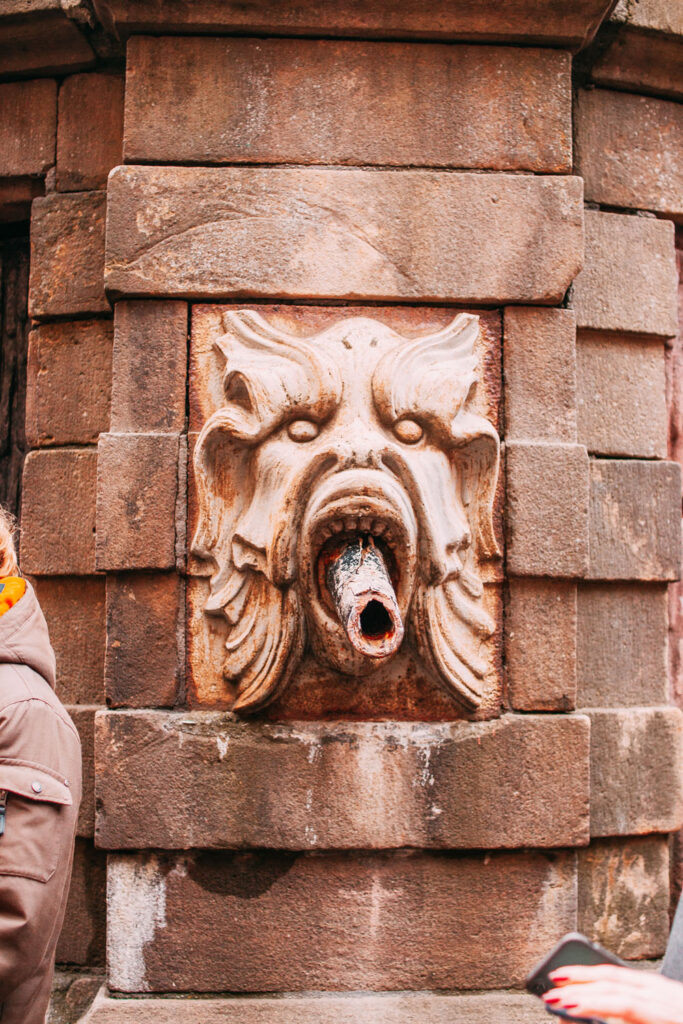
This guide is laid in geographic order. You can easily explore each location in one long walking tour or split the visit up into the various neighbourhoods and/or districts around Stockholm.
Mårten Trotzigs Gränd
Stockholm’s old town, or Gamla Stan, is a great place to start your tour. This part of the city dates back to the 13th century and still contains many 17th and 18th century buildings. The streets are dense with history and ancient spirits. Make your way along Västerlånggatan to the iron gated entrance to Mårten Trotzigs Gränd. This narrow alley, thick with graffiti, looks from afar like nothing special. But entering the lane at night, you’ll notice how dangerous and eerie this cramped walkway really is. The path has 36 steep steps, which spread only 35 inches wall to wall, making it the narrowest alley in Stockholm.
The stairs were named after merchant Mårten Trotzig. Trotzig owned several properties around the area and he commisionned the staircase in order to be able to better access them. He was a copper and iron merchant and one of the richest men in Stockholm. But with such a large purse of gold, came those who would try to steal it. And in 1617, he was beaten to death in nearby Kopparberg. His untoward death perhaps cursed the staircase, and these stairs would become the scene of many deaths to come.
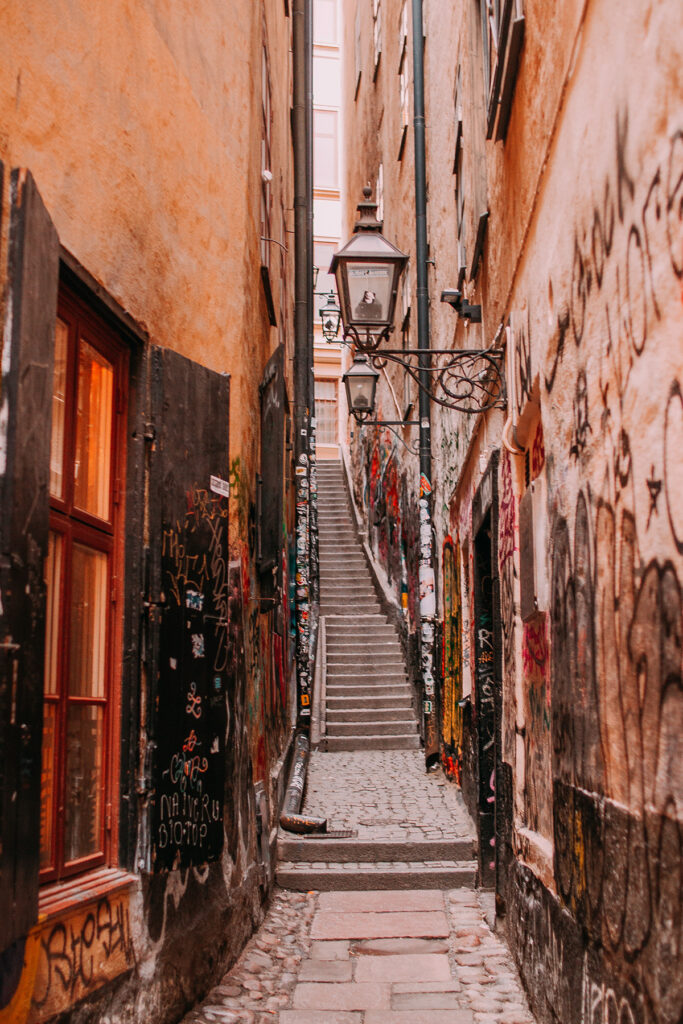
Famously people would be robbed at the top of the stairs after exiting nearby brothels. The stairs were a prime location for thieves as the drunkards would be struck on the head and then pushed down the stairs. This allowed the thieves to get away with murder as the fall looked like what killed the men and would disguise the killing blow. Therefore there would be no one to suspect foul play. After pushing the victim down the stairs, the thieves would run away into the darkness of the night.
Often the women at the brothels were accomplices to these murders, identifying particularly rich patrons to the criminals outside. After a rash of these deaths, the authorities finally started to catch on and patrolled the area around the stairs. Eventually, the jig was up. Although the stairs are no longer the location of robbery and muder, there is still a spooky atmosphere here, which seems to boil up with the spirits once killed on these stairs.
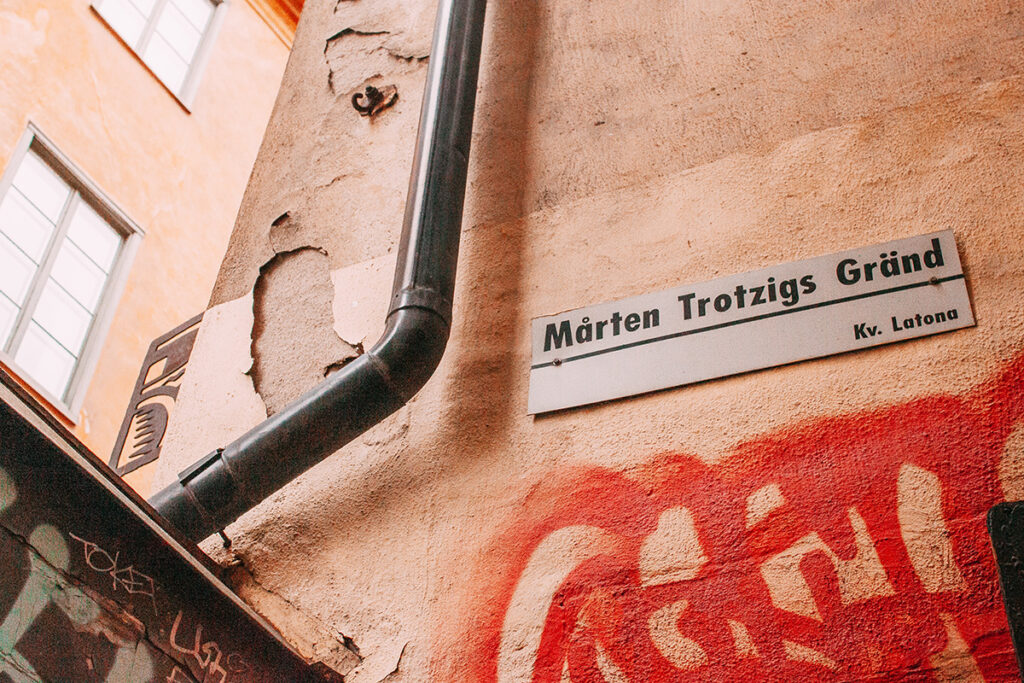
Black Friar Tombstone
At the top of the Mårten Trotzigs Gränd, head east along Prästgatan and turn north up Södra Benickebrinken until you reach Svartmangatan. Stockholm’s old Black Friars’ Monastery was once located on the west side of Svartmangatan. Look out for the black iron door along Benickebrinken street. This rather unassuming entrance leads to the ancient vaults of the old Black Friar Brotherhood Monastery. Visitors can still visit the catacombs by private guided tour with the Medieval Museum in Stockholm.
Svartbrödraklostret
The Black Friars’ Monastery or Svartbrödraklostret was built in 1336. They were named the “black friars” due to their attire, which featured black, hooded robes. Despite the order being funded by the previous King Magnus IV in 1337, the new Swedish King Gustav Vasa, who reigned in 1528, wanted them out. By order of the King, the monastery was demolished in 1547.
Hundreds of years later, in 1930, when the St. Nikolai school was being erected, construction workers unknowingly dug up the bones of the monks who had been buried here for over 500 years. The construction workers were so shocked when they uncovered this gruesome discovery that they hurriedly moved all the bones into one mass graves, without another thought. But shortly after doing so, the construction workers reported having terrible visions and hearing voices down in the vaults. When they would follow the cries, they found them to be echoing from the mass grave. Most workers were scared right off and didn’t return. Clearly, they wanted to be returned to their original resting place.
The one tombstone which marks the spot is engraved with the text, “Here are the remains of Swedish Dominican monks in the Old Town. They were found at the foundation excavation of the St. Nikolai school’s new building in 1932. Rest in peace.” But it doesn’t sound like they are at peace at all. Still to this day, people have been known to hear their sorrowful cries, echoing through the vaults.
#23 Baggensgatan
Following in the footsteps of the Black Friars, make your way to Baggensgatan. The lower part of Baggensgatan leads to the Black Friars’ Monastery entrance, and many of the friars lived along this narrow street. Walk along Baggensgatan until you come to number 23. This house looks pretty unassuming, but the history behind these walls is rich with ghoulish tales. Building number 23 was located right about the vaults of the old Black Friars’ Monastery. After Gustav destroyed the monastery, legend had it that the friars had hidden all their earthly treasures inside the vaults. Before the destruction, they had hidden the entrance to these catacombs so no one except those in the brotherhood could find them. After hundreds of years, this was in the hopes that they could return to power and recover their riches.
Magnus Ahlström
In 1762 the building was bought by captain Magnus Ahlström. The house went by the name Ahlströms jungfrubur or “the Maiden Cage of Ahlström.” If the name didn’t give it away, it was indeed a brothel. He described the house as a “virtual temple of Venus with space for the priestesses on all three floors.” The brothel was such a popular spot on the street that the stone stairs leading into the house are more worn down from foot traffic than any others along the road.
But Ahlström’s penchant for the darker side of the law didn’t stop here. He was obsessed with the rumours around the hidden treasure and brought this building for that very reason. Ahlström hired a group of miners to dig down and down into the foundations of his house to access the hidden friar tunnels. He placed armed guards at the entrances to tunnels to prevent the miners from escaping with the treasure for themselves.
Underground Excavations
After weeks of unsuccessful excavations, he came down to find the miners had disappeared even though the guards had never seen anyone leave the tunnels. They searched the tunnels for weeks, but no sign of the miner was found. Still, to this day, residences Baggensgatan say they can hear the sound of pick axes digging long into the night. Perhaps the Friars cursed the treasure. Any of those who weren’t worthy of retrieving it would be sentenced to forever searching for it, even in death.
#14 Kindstugatan
In the medieval period in Stockholm, swordfights were among the most popular ways to resolve disagreements amongst the menfolk. Usually, these duels ended without too much bloodshed, but on the night of August 12th, 1674 poet Lasse Lucidor wasn’t that lucky. In fact, his nickname was “the unlucky one.” Lucidor had gotten into a fight with the bartender of the basement pub, which once resided here.
Lieutenant Storm
The bartender refused to serve the poet until he paid the rest of his tab, knowing all too well that he didn’t have the coin to afford even what he had already drunk. Hoping to break up the fighting, Lieutenant Storm approached the drunk poet in the hopes of simply asking him to leave without a skirmish. But thinking the Lieutenant meant to harm him, Lucidor drew his sword, not a smart move since he was a lover, not a fighter. Lucidor swung widely at the Lieutenant, but only managed to give him a scratch on the arm.
Now filled with rage at this seemingly mad writer, Storm stabbed him through the heart, a fitting end for a poet. He was buried in an unmarked grave in Maria Magdalena graveyard, a common practice for those too unfortunate to have a tombstone of their own. But those buried in unmarked graves are often unsatisfied with their existence being so poorly remembered. These unnamed spirits haunt the spots where they met their untimely end and walking along Kindstugatan see if you can hear the sorrowful poet’s death wails as he morns for his soul into eternity.
Stockholm Bloodbath
Walk west until you reach the main square in Gamla Stan, Stortorget. Stortorget in Swedish means “the Grand Square.” Surrounding the square are some of the most regal and colourful 17th and 18th-century buildings. In the middle ages, this intersection was the Times Square of the period. While the cobblestoned square is as charming as can be, this ancient part of town is also home to one of the most notorious bloody crimes of Stockholm’s history; the Stockholm Bloodbath of 1520.
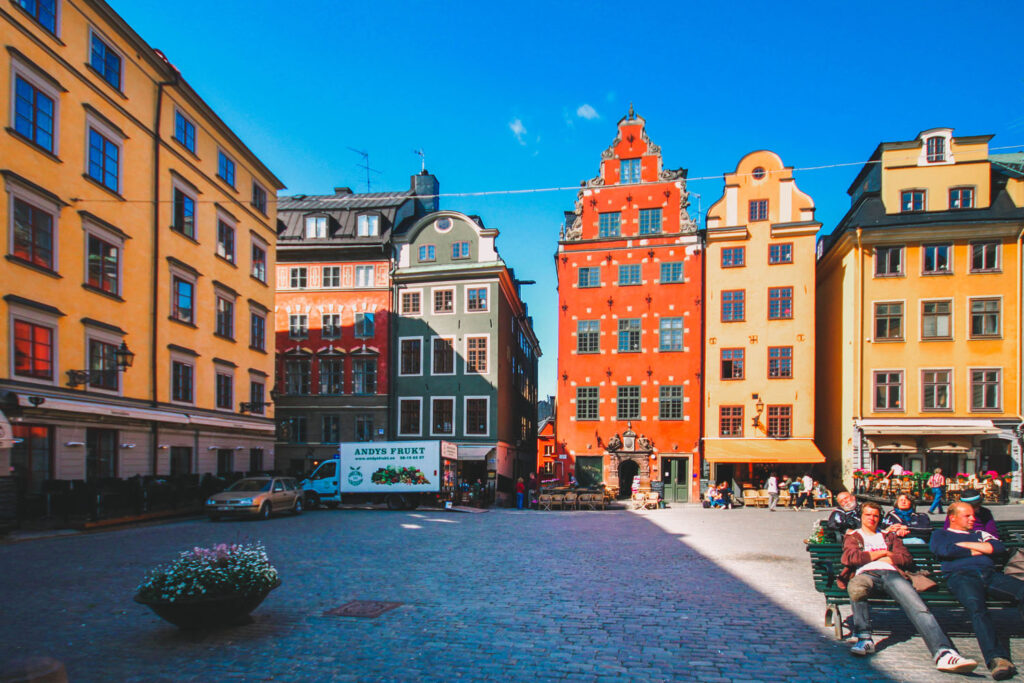
The Stockholm Bloodbath was the real-life inspiration for Game of Thrones “Red Wedding.” When Danish King Kristian II invaded Sweden and took the throne, he needed to cleanse the court of anyone who opposed him. 92 members of the nobility were brought to the main square in Gamla Stan. There, they were accused of treason and were beheaded and hanged one by one. Onlookers said there was so much blood it soaked the ground for months and flooded the entirety of Stortorget. The executions were such a long process, they occurred over three days from November 7th to November 9th, 1520. Now, in November, residences have reported seeing the blood still flowing in the square, lit by the moonlight, it disappears the second someone tries to touch it.
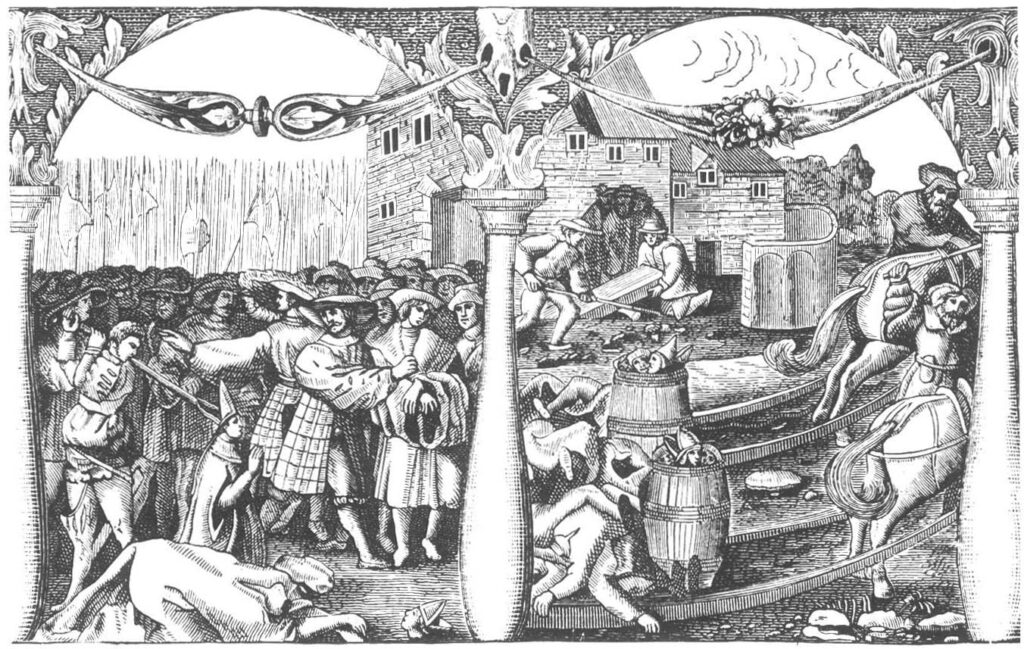
#20 Stortorget
One of the buildings nearby, which is painted red, contains 92 white stones, surrounding the window panes. Each stone represents the soul of one of the Swedish nobles who perished during the Bloodbath. Legend says that if these stones are removed, that soul of that person will rise from the dead and haunts the streets of Stockholm.
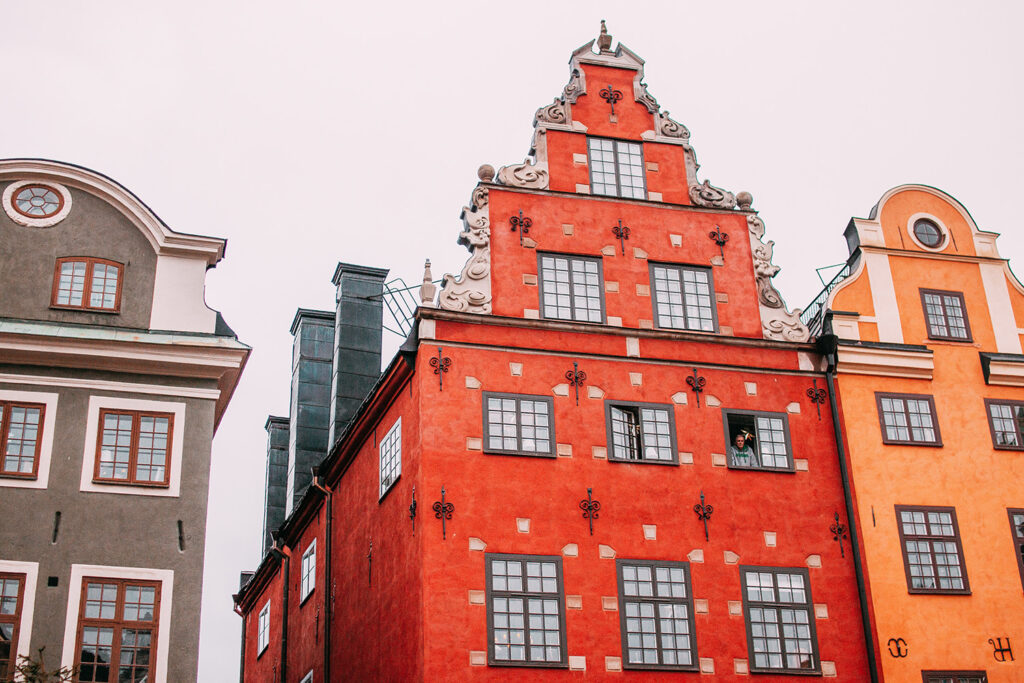
Tjuvakällaren
Where the Nobel Musem now stands was once the spot where you’d find the old Rådstugan or Stockholm Town Hall. The town hall stood here from 1471 to 1772. Inside is where you would find the Siskeburen or detention centre and the Tjuvakällaren or thief’s cellar. The Tjuvakällaren was located in the depths of the medieval basement. The basement was a disgusting place, where the sewage from the rest of the city would collect and was never cleaned. Prisoners were chained to massive logs, beaten and tortured. Some would be pressed up against the walls, which were known to get so cold that the prisoners would freeze onto them.
Siskeburen
The Siskeburen was located on the first floor of the town hall and was a much less brutal place for prisoners who awaited their fate. The name comes from the Swedish word for “cage,” as the chambers used to keep the prisons looked like tiny cages. Often one of the more common people you’d find here were women waiting to receive their punishments for infidelity. The church at the time controlled who married who as a means for regulating their power, ensuring families were marrying “their own kind.” This resulted in many unhappy marriages, and therefore adultery was pretty common, but can you blame them? Women accused of cheating would be stripped naked and forced to walk with stones strapped to their backs to the gates of the city. There, they would be banished and could never return.
In front of the Siskeburen, you could find the Copper Matte or “pole of shame.” The pole was topped with a copper sculpture of a man wielding a large crop of rice. This statue was meant to warn citizens to follow the rules as disobeying would result in harsh punishments. It stood here from 1603 to 1776. The word “matte” comes from the name of the mayor at the time, Mathias Trost, who was a strict ruler and who the statue was also modelled after. You can now find the Copper Matte statue on display inside the Stockholm City Museum.
#24 Västerlånggatan
Västerlånggatan, in the middle of the busy tourist neighbourhood of Gamla Stan, is home to the chic little shop Iris Hantverk located at #23 Västerlånggatan. But above the doorway into the store is an old stone frieze with a rather fascinating story behind it. The legend goes that one day a ship’s captain was lost at sea. The captain was tossed overboard when he was saved by a beautiful water sorceress. She brought the captain down to her castle under the waves where she nursed him back to health. In exchange for returning the captain to his ship and his safe return home, she gave the captain a letter to deliver immediately upon his return to Stockholm. The letter was addressed to Mr. Måns at #23 Västerlånggatan.
Ghost Cat
But when the captain returned to Stockholm, he forgot all about the message. He spent the majority of his day focused selfishly on unloading his ship’s cargo. When he finally got around to posting the letter, the homeowners told him that the only person named Mr. Måns at that address was a cat. Puzzled but thinking he should still deliver the letter, he went to find the cat.
Once he placed the letter in front of Mr. Måns, the cat began to cry and then proceeded to scratch the captain to death. After attacking the man, the cat sorrowfully jumped out the window where onlookers saw him turn to stone. You can still see Mr. Måns on the frieze above the doorway at #23 Västerlånggatan. No one will ever know what was written in that letter since it was written in a language no one could understand, so we are only left to wonder what kind of sorcery cursed the poor cat.

Stockholm Royal Palace
Stockholm’s Royal Palace is home to more than one of the city’s famed ghosts. The first is the White Lady or Vita Frun. But unless you have some Swedish royal blood flowing through your veins, you probably won’t spot her. The White Lady is known to only appear to members of the royal family, warning them of a royal’s imminent death. She is said to wear a long white dress, a veil covering her face, wit dark gloves covering her ghoulish hands. In those hands, she clutches a large key ring which she uses to get into all 1,403 rooms inside the castle. She has appeared to both King Oscar II, Princess Eugenie, Princess Margaret and Queen Silvia. Even those not in the royal family have been known to hear that unforgettable ghostly clinking of keys as she glides throughout the hallways of the darkened castle.
The other of the palace’s ghosts in the old Gray Man or Grå manner. The Grey man is reportedly the ghost of Stockholm’s founding father Birger Jarl. Birger Jarl is said to appear in front of the new rulers every time they take the throne. Birger Jarl originally built his fortress on the very same spot where the Palace is located today. One can only wonder if he haunts the castle, ensuring that the rulers of his kingdom are truly worthy.
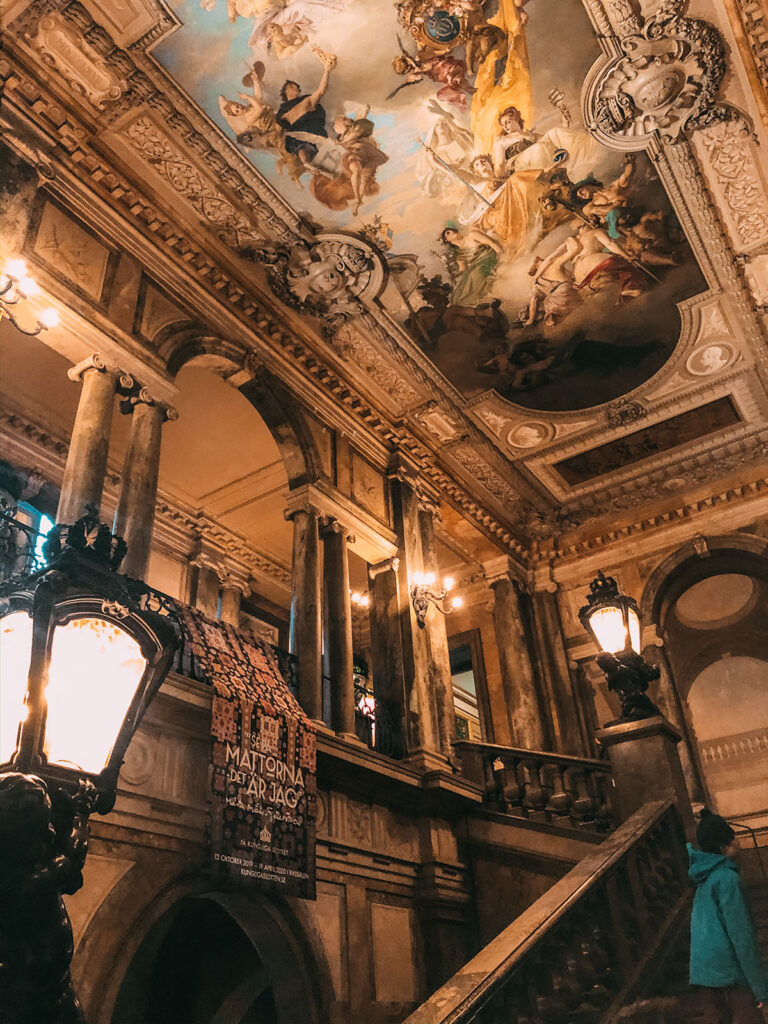
Storkyrkobrinken
Storkyrkobrinken was once better known as Helvetesgränd or “Alley of Hell.” This area was located north of the main church and, therefore, “the northern side of the damned.” It was a street that frequently saw criminal activity and was rampant with suicides. The city’s executioners were known to live on this very street, ensuring it’s dark history for the ages. Swedish executioners were given their own apartments, but this luxury came at a high price. All executioners were men who were themselves condemned to death. In exchange for a period of freedom, they served as executioner, a job otherwise too gruesome to find willing applicants. The men were marked to guarantee everyone knew who they were. Both their ears were cut off, and they were branded with the city’s crest.
Their employment would only end when another prisoner took their place. This new prisoner, also sentenced to death, would come to the executioner’s apartments and murder the previous executioner. But what a life to lead, knowing that your days were numbered and that death lurked in the very room you lived in. The apartment was destroyed in the 18th century, but the dark mark of their residence still resides in the area.

Bonde Palace
Just outside Bonde Palace is where Hans Axel von Fersen was beaten to death, in 1810. Hans Axel von Fersen had served both King Gustav III and his son King Gustav IV. But when Gustav III died, his son was exiled, and Christian August of Augustenburg was put on the throne. Fersen was frequently heard opposing this election as his support directly lay with Gustav IV. When Christian August died shortly after his coronation, Fersen was suspected of foul play. The 1800s weren’t a time for philosophical investigation, and Fersen was attacked by an angry mob and lynched outside Bond palace. Fersen was always loyal to the realm, and his ghost is still thought to haunt these streets in search of revenge.
Riddarholmen
Riddarholmen Church is located on its own island just west of Gamla Stan. It was once a former medieval abbey built in the late-13th century for the Greyfriars. Since the church was always one the grandest in the city, it has long been the site for royal burials. One of these royal families was the Torstensson family, whose vault is known to be one of the most haunted spots in the city.
At night, employees have been known to hear banging and knocking coming from inside the tombs. There also have been rumours of footsteps and heavy breathing coming from the other graves. Almost as if they are clamouring to get out.

Stockholm Cityterminalen
Head over to the Stockholm Cityterminalen, where you have access to a myriad of different train lines. Standing on these platforms, unusually late at night when there aren’t too many people on the platform, you might get the chance to spot the elusive “ghost train.” This silver-coloured train is known to stop at various stations along the track. But be warned, do not get on. This train isn’t headed anywhere the living wants to visit.

The train goes by the name the ‘Silver Arrow‘ or ‘Silverpilen’ due to the aluminum exterior. This ghost train is thought to carry the souls of the dead to an abandoned station in the middle of the forest. This station, known as Kymlinge, does, in fact, exist. It was built in the 70s to service rural parts of Stockholm, but construction was abandoned after it was deemed unnecessary. Today, residents warn visitors to be wary of getting on any train that looks like the silver arrow as the living will get stuck in an infinite loop as the train is meant only for those already dead.

Nya smedjegården
The Nya smedjegården, also known as the New Blacksmiths’ Yard, was one of Stockholms’ most notorious prisons. It operated between 1636 and 1896. The building once stood on the corner of Drottninggatan and Barnhusgatan, which is now a seemingly perfect residential area. But gaze into the past, behind every corner store and apartment building, and you’ll find a dark history.
The Nya smedjegården prison was built to contain the overflow from the dungeons of the old royal castle, Tre Kronor. Prisoners brought here were made to work in the smithy as part of their punishment. Back then, there was no distinction made between crimes, which meant that men, women, big thieves and first-time criminals were mixed. Making it an extraordinarily dangerous place to be for all those incarcerated.
Rosenkammaren
But the most shocking part of the Nya smedjegården was the Rosenkammaren or Rose Chamber. Despite the flowery name, this room was better known as the torture chamber. It was often filled knee-deep with freezing cold water. Prisoners were chained from the ceiling and suspended into the icy pools. It wasn’t until 1772 that torture was abolished by Gustav III, and the torture chamber was destroyed.
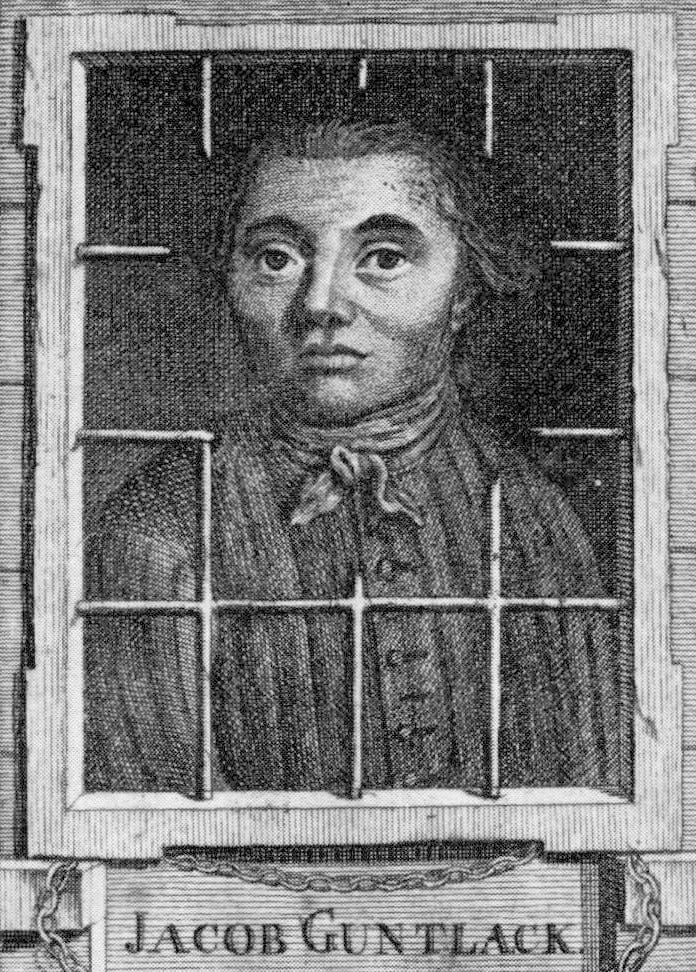
Stora Barnhuset
But the dark nature of the building had been imprinted on the earth, and even after the prison changed hands, the wicked spirits which haunted location stayed on. In 1624 the prison also served as a children’s workhouse and orphanage called the Stora Barnhuset or “Great Children’s Home.” But it was anything but great for those poor souls trapped there. The workhouse was poorly run, and abuse was rampant. In 1770 there was a great scandal that revealed that staff kept the children half-starved and sold the food donated by the state. The mortality rate was extremely high, and hundreds of little children met their mournful end here.

Gustav III was extremely sympathetic to the horrible conditions these children were living in. He decreed that children placed in the orphanage would only be there temporarily until a foster home could be found. From 1785 onward, children didn’t spend their entire lives within these haunted walls. Instead, they stayed there only for a couple of months before a permanent home could be found. The orphanage itself was finally closed in 1922, but the tormented spirits of both the prison and the orphanage remain.
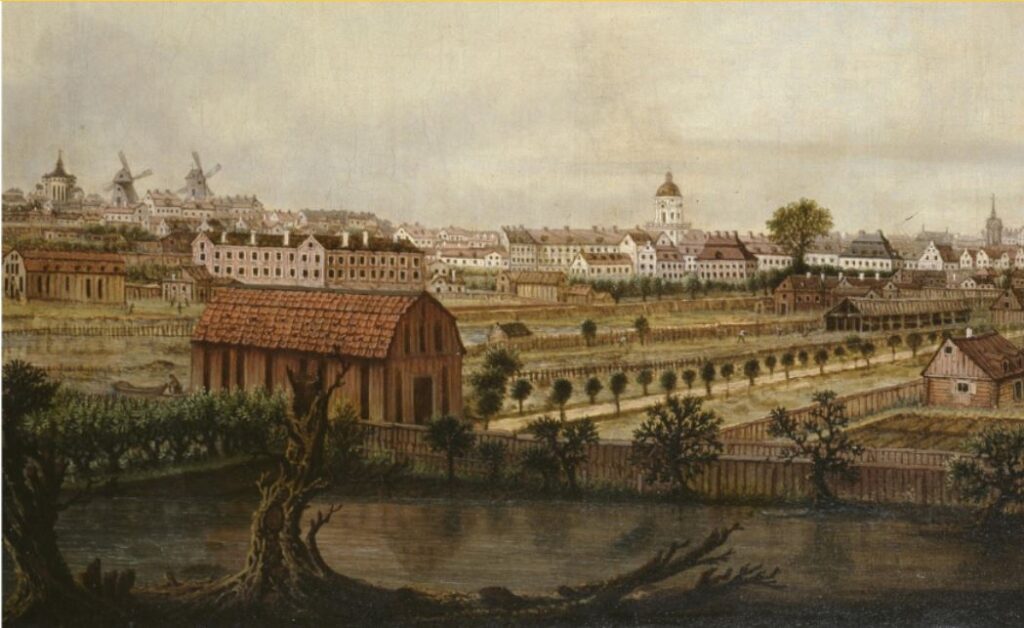
Schefflerska Palace
Walking along Drottninggatan, you’ll reach Schefflerska Palace locked away from the public behind a set of tall, teal gates. Since the Palace is closed to visitors, this is the best way to get a look at this spooky manor. The palace has been so notorious haunted that it even goes by the name “Spökslottet,” which in Swedish means “haunted house.”
The Schefflerska Palace was built by a wealthy merchant in 1690. Almost as soon as it was made, it was proclaimed as being haunted. Guests who visited the house would report hearing strange music coming from unoccupied rooms. Windows and mirrors were also known to break no reason. People thought one of the reasons the house was so haunted was that owner Jacob von Balthasar Knigge, was reportedly a devil worshipper. Beneath the palace, they said he kept skeletons, buried treasure, and the victims of his devilish rituals.
The Death of Knigge
Although officially Knigge died in bed in 1796, legend has it that on that night neighbours saw him getting into a black carriage with flames which spurted forth when they took off. The carriage was being driven by a massive black creature with horns and a tail. It carried him into the night, never to be seen again. His body is said to be buried at the Adolf Fredrik cemetery, but until someone can dig it up to see if he’s really there, the legend lives on.
Gustaf Sandström
Long after his death, strange things continued to happen inside the palace. In 1879 Gustaf Sandström, a famous opera singer, was a guest in the home. That night, for reasons no one could comprehend, he committed suicide. Later a young couple was murdered in the same room and their bodies hidden behind a bricked-up wall. They were only discovered years later, too late to look for a suspect.
A priest was finally brought to the palace to investigate the strange occurrences. While trying to exorcist the demons, he felt an ominous, invisible presence enter the room. He was thrown out a glass window by the unseen entity. Although he survived, he never returned as the darkness which possessed the house was too strong. The area around the palace is known as Spökparken or ‘the Ghost Park.’ With the city seemingly getting on board with officially labelling the area as being “ghostly,” it’s hard to see this as just a legend.
The Käpplinge Murders
In 1389 the tensions between the Germans (who supported Albert, King of Sweden) and the Swedes (who helped Margaret I of Denmark) were brought to a boiling point. On June 14th, 1389, German soldiers and merchants gathered in Gamla Stan and read a list of who they deemed traitors aloud in the square. Once the traitors were gathered up, they were put on a boat and sent over to Käpplingeholmen (now Blasieholmen). There, inside a large barn, they were burned alive. Walking along this street at night in the winter, you’ll often find fire barrels lit to keep the populace warm. However, the Käpplinge ghosts don’t take too kindly to this, and people have been known to still hear their angry screams on cold winter nights.
Brunkebergstorg
Brunkebergstorg is a square in the Norrmalm district in Stockholm’s inner city. The square was once lined with fashionable shops in the 19th century, but early in the 20th century, it became Norrmalm’s commercial center. That being said, 500 years ago, this square served a much darker purpose. This was one of the central locations for public executions in Stockholm. One of the most gruesome ones was the murderer of King Eric XIV‘s secretary Martin Olai Helsingius. Martin Olai Helsingius had pleaded with the king to pardon his predecessor, Jöran Persson, who had been accused of the looting of Svartsjö Palace in 1597. Eric was appalled that his new secretary was trying to protect the acts of a known criminal and Martin was sentenced to death for treason.
But Martins’s punishment was more severe than even Persson’s (who had actually committed a crime). Martin’s ears were nailed to the gallows, and after he was hanged, he was taken down just in time to keep him alive. His body was then set upon the breaking wheel, where he was tortured. Finally, after hours of terrible suffering, he was beheaded. His body nailed to a stake in the square where the public could observe him as a horrendous warning for others who would oppose the king.
van der Nootska Palace
In the middle of the hipster neighbourhood of Södermalm, you’ll find one of the most impressive event venues in the city, van der Nootska Palace. The palace was built in 1674 and is named after its builder, Dutchman Thomas van der Noot. The manor house served as a private residence for several wealthy families over the years and, throughout that time, gathered its fair share of ghosts.
Mermaid Melusina
The ghost of mermaid Melusina is known to take a bath here every single Sunday night. As the legend goes, Melusina was once the king’s daughter. When she was born, she was cursed by a wicked witch. The curse turned the beautiful princess into a mermaid once a week until she gave birth to eleven children. The princess married a noble duke and hid her transformation by hiding inside the bathroom every Sunday night. She gave birth to ten children before her husband discovered her terrible secret.
Ashamed of her appearance and her husband’s disgust, she fled, threw the pipes under the bathtub, where she would remain a mermaid forever. Still, to this day, she emerges to the surface to bathe in the van der Nootska Palace. Evidence of this ghost can be found in the architecture of the house. On the exterior, you can see a series of carvings of mermaid’s faces.
Jean Jahnsson
The other ghost who lives in the palace goes by the name “the jeweller’s wife.” Jean Jahnsson was a wealthy jeweller who owned the manor in the 20th century. But Jean Jahnsson was a torrid adulterer and kept several lovers on the side. It was only a matter of time until his wife discovered his immoral behaviour. When she died, she still carried that grief and anger with her into death, and her raging ghost latched itself to the palace. Her spirit is often spotted furiously, stomping around the castle in search of Jahnssonand with one of his dalliances.
Stockholm’s Bysättningshäkte
One of the city’s most popular modern restaurants, Häktet, hides behind its slick bar and contemporary cuisine, a sinister secret. This building was once Stockholm’s Debtor’s Cottage, known as Stockholm’s Bysättningshäkte. The Bysättningshäkte operated from 1782-1872. Back in the 1700s, it was literally illegal to be unemployed. If you didn’t contribute to society, the authorities were allowed to throw you in jail. Orphans, anyone who was sick or disabled, were also thrown in these debtors cottages. Since they didn’t pay taxes, they were “in debt” to the city.
These captives were forced into labour to repay their debt. Women were forced to spin thread from the moment they got up in the morning to the time they went to bed. Men were required to extract paint from the sap of trees, which was used to dye fabrics. There was little food to go around, and there was often violent misconduct, resulting in many inmates’ deaths. Still, since these people were seen as unfavourable by the city, their deaths were often overlooked. While you can dine on horse tartare and steamed cod here at Häktet, listen carefully to see if you can hear the shrieks of starving ghosts who are still heard rattling the bars of their cages.
Kolerakyrkogården
We are now heading out of the city to explore remoter locations on the tour. If you’d prefer to end your walk inside the city center, you can do so now. But from Bysättningshäkte, its only a 21-minute train ride (on line 13,14,17 or 18) to the Kolerakyrkogården. The Kolerakyrkogården or the Cholera Cemetery is located in the southern part of Stockholm. This cemetery was the main burial ground for victims of the 19th-century cholera epidemic. Many residences of nearby Södermalm died of the easily transmittable disease. Horse-drawn carts piled high with corpses carried the dead from the inner city, up to the cemetery. Up to 16 coffins were then placed in each grave. In total 3,665 people died in the first outbreak from August 27th to October 17th, 1834.
The city was hit again in 1853, which resulted in about 3,000 more deaths in just a few weeks. The Kolerakyrkogården was filled to bursting with these bodies, some of which weren’t even identified when placed into mass graves. Such a place of mass sorrow is bound to have its fair share of forlorn spirits. People who visit the graveyard today have been known to hear disembodied voices echoing across the otherwise quiet green fields.
Galgbacken
Located just a 10-minute walk away from the Kolerakyrkogården, you can find the Galgbacken or Gallows hill. This spot, now marked by a historical sign, indicates the last public execution site in Stockholm was located. The gallows hill was used as early as 1689, and the last public hanging took place in 1818. After its destruction, the memories of the dark history were lost to the sands of time. It wasn’t until 1930 when new a block of houses was being built that construction workers uncovered a series of skeletal remains.
When it was in use, inmates from the nearby inner-city prisons would be brought here. What made this gallows different, was that the prisoners were brought here and allowed to enter the Källaren Hamburg cellar, for one last drink before they were hanged or beheaded.
Skogskyrkogården
The Skogskyrkogården or Woodland Cemetery is one of a few dozen cemeteries marked as UNESCO world heritage sites. Unlike some cemeteries created out of the need for mass burials, this cemetery was well planned, and some of the world’s best architects were employed to build an impressive design. An international competition was held in 1915 for the plan of the new cemetery in Enskede. The winning architects modelled the cemetery’s layout on German forest cemeteries. These ancient graveyards provided an extraordinary tranquil environment surrounded by the beauty of the natural world.
Sculptures in the Park
Throughout the park, you’ll discover stunning sculptures by Carl Milles. These were created to be integrated into the rest cemetery’s layout of peaceful paths and gentle rolling hills.
At one point, this old cemetery was a popular spot for those suffering from homelessness. They would come here to camp at night, but after some time, people noticed they had stopped camping here altogether. Many of them mentioned hearing voices at night, and seeing pale beings appear and then disappear as quickly as they could blink. See if you can spot one for yourself.
Hopefully, you enjoyed the tour and aren’t took scared to go to bed tonight! Let me know the spookiest place you’ve ever been to while travelling or what you’re most looking forward to exploring in Stockholm!
Happy Travels Adventures!
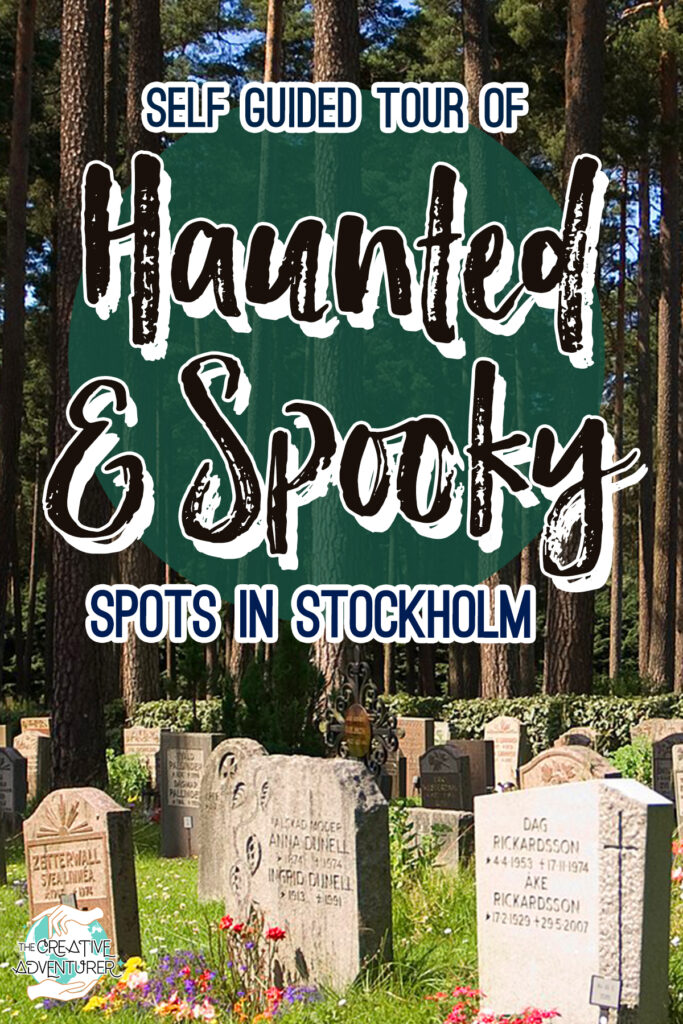
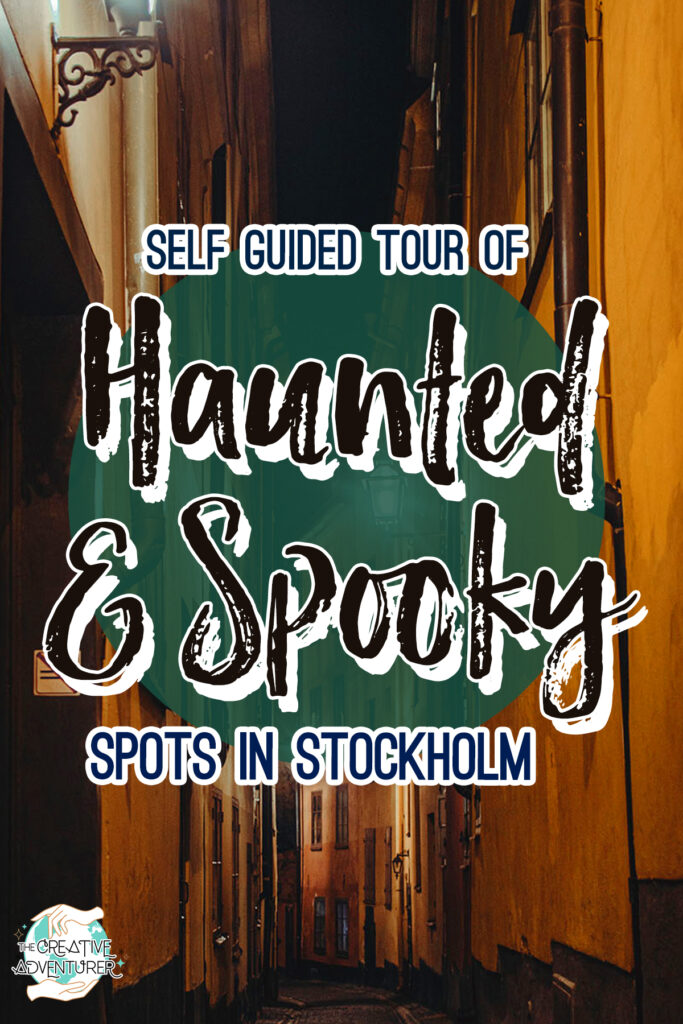
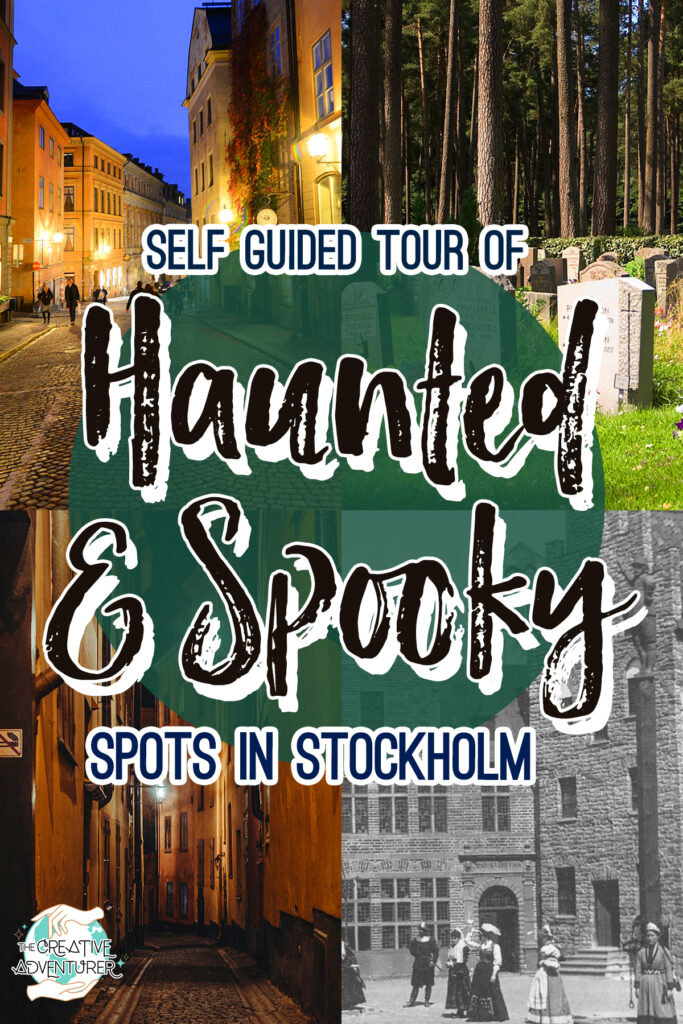
References
Wikipedia | City of Stockholm Archives | Stockholm Gamla Stan


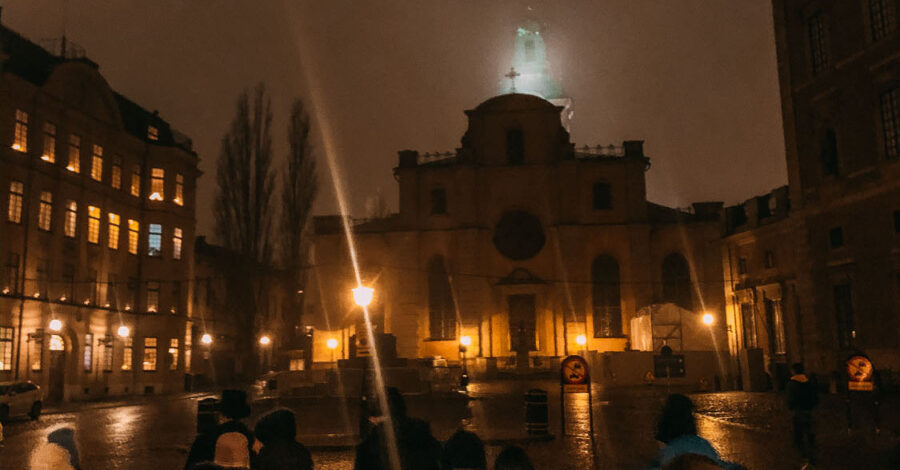
 (@gunnar.lj)
(@gunnar.lj)


 (@8188mutti)
(@8188mutti)
 (@m_travelphotos)
(@m_travelphotos)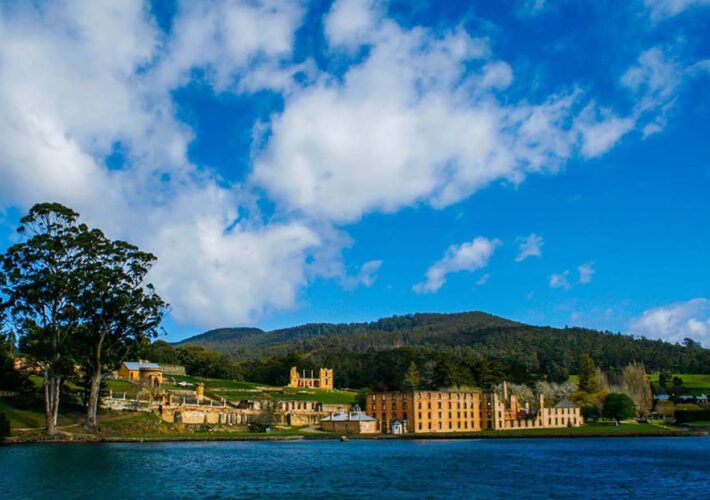
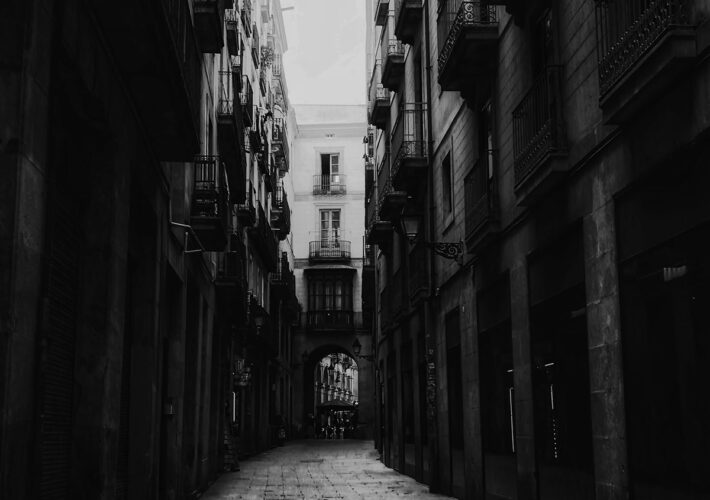


Leave a Comment